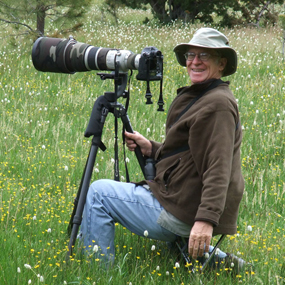

Join BirdNote tomorrow, November 30th!
Illustrator David Sibley and actor H. Jon Benjamin will face off in the bird illustration battle of the century during BirdNote's Year-end Celebration and Auction!
The wetlands surrounding Teshekpuk Lake provide a food-rich haven for Arctic-breeding geese during the late weeks of summer when they cannot fly. The birds are molting, replacing their worn-out flight feathers. To survive this dangerous time, they must find a place rich in food and safe from predators. It’s the most important place for molting geese in Arctic Alaska. The 60,000 Black Brant – like this one – represent about 20% of the world’s population.
BirdNote®
Teshekpuk Lake
Written by Dr. Gordon Orians
This is BirdNote.
[Teshekpuk Lake ambient including call of Yellow-billed Loon]
Imagine a place on the American landscape so rich and hospitable that it attracts and nurtures polar bears, caribou, and more than 60,000 black geese, called Brant.
[Calls of Black Brant]
You’ll find such a place on the Arctic plain of northern Alaska. Its name is Teshekpuk Lake. The wetlands surrounding the lake provide a food-rich haven for Arctic-breeding geese during the late weeks of summer when they cannot fly. The birds are molting, replacing their worn-out flight feathers. To survive this dangerous time, they must find a place rich in food and safe from predators.
It’s the most important place for molting geese in Arctic Alaska, this Teshekpuk Lake. The 60,000 Black Brant represent about 20 percent of the world’s population.
[Calls of Black Brant]
Teshekpuk Lake is also an important denning and feeding area for polar bears. And in spring, the 67,000-strong Central Arctic caribou herd gathers here to give birth to their calves.
[Grunts of caribou]
Because the Arctic plain is so biologically important for birds and mammals, many who care about wildlife are urging that it be off limits to drilling for oil and gas. There’s more to this story at birdnote.org.
###
Sounds of Black Brandt [30459] provided by The Macaulay Library of Natural Sounds at the Cornell Lab of Ornithology, Ithaca, New York, recorded by M. Andersen. Ambient, including calls of Yellow-billed Loon, recorded on site by Gerrit Vyn; not yet catalogued at Macaulay. Calls of caribou [136352] by M. Andersen.
Producer: John Kessler
Executive Producer: Chris Peterson
© 2012 Tune In to Nature.org July 2012 Narrator: Mary McCann
ID# teshekpuklake-01-2012-07-23 teshekpuklake-01




